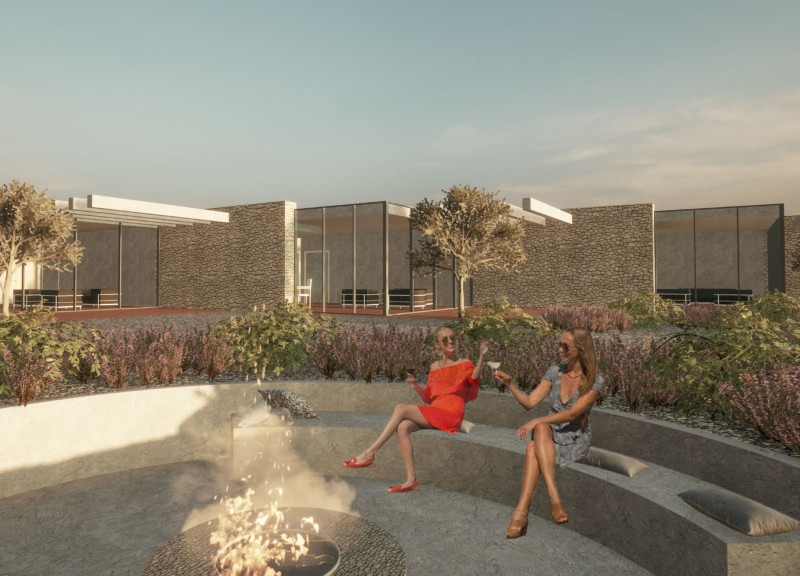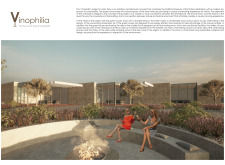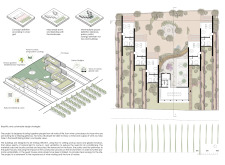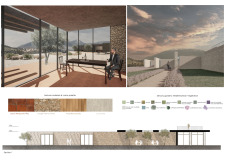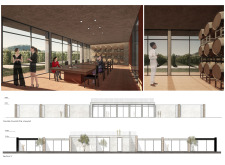5 key facts about this project
The primary function of the project is to serve as both a hospitality venue and an educational space centered around viticulture. Each guesthouse is strategically positioned to optimize views of the surrounding vineyards, promoting a sense of immersion in the local culture. The centralized wine tasting area serves as the heart of social interaction among visitors, allowing for communal gatherings that enhance the overall experience.
Materiality plays a significant role in this project, with an emphasis on locally sourced materials that reflect the regional context. The use of rough-hewn stone, local terracotta tiles, wooden panels, and carefully integrated concrete elements contributes to the project's integrity and its aesthetic alignment with the Assisi landscape. These materials not only reduce the environmental impact of construction but also serve to root the architecture within its geographical and cultural setting.
Sustainability is at the forefront of the design approach, with renewable energy solutions, like photovoltaic panels, strategically integrated into the architecture. This commitment to energy efficiency not only ensures a reduced carbon footprint but also enhances the educational aspect of the project by showcasing sustainable practices in a real-world context.
The unique integration of biophilic design elements differentiates "Vinophilia" from typical architectural projects of its kind. The extensive use of glazing provides unobstructed views of the vineyards, while shaded terraces promote outdoor engagement with the surroundings. Additionally, the inclusion of a sensory garden emphasizes the connection between built and natural environments, enhancing biodiversity and promoting a restorative experience for visitors.
The overall project contributes significantly to the cultural landscape of Assisi by marrying architecture, sustainability, and local heritage. Interested readers are encouraged to explore the project's architectural plans and sections for a deeper understanding of the design choices and outcomes that characterize "Vinophilia." By examining these elements, one can appreciate the careful thought that has gone into creating a space that honors both tradition and innovation in winemaking.


